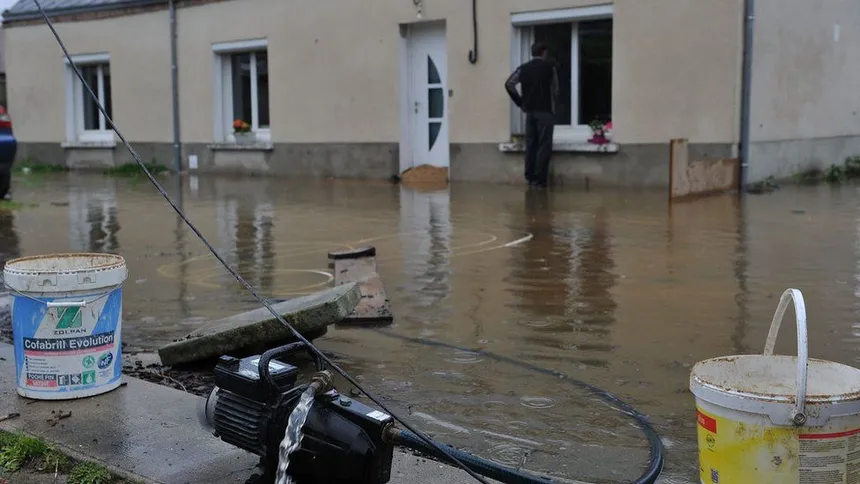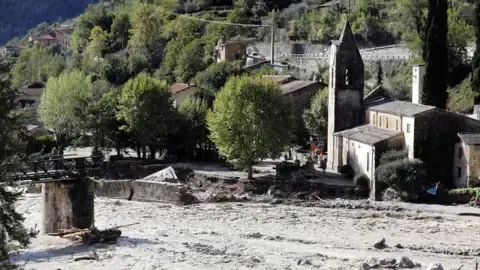Widespread flooding has brought France’s northern and eastern regions to a standstill, forcing thousands of people to leave their homes and prompting a state of emergency in over a hundred towns and villages. The reason behind this chaos is record rainfall, which has caused rivers to burst their banks and inundate the countryside.
The French government has allocated a €50m emergency fund to help local authorities cope with the devastating effects of the floods. Additionally, €80m has been set aside to support farmers in the worst-affected areas, according to Agriculture Minister Marc Fesneau. The National Weather Service, Météo France, has issued warnings for several departments, predicting that the situation could worsen over the next 24 hours in eastern France.
In the Pas-de-Calais region, which has been downgraded from red to orange alert, about 50 roads are blocked or damaged, with some having fissured, moved, or collapsed. The situation in the Alps of Haute-Savoie is particularly dire, with residents in the Chamonix valley and around the Arve River advised to stay at home until the flooding subsides. Almost 300 homes are without electricity, and numerous roads are closed due to the risk of landslides, rockfalls, and subsidence.
Residents along the Rhône River in Lyon and Avignon to Marseille have been warned of the risk of flooding, as sections of the river are expected to rise by about a meter. The deluge has been exacerbated by two recent storms, Ciarán and Domingos, which saturated the ground, and a subsequent low-pressure system from the Atlantic.

“This event is comparable to a 100-year flood,” said Stéphane Bonelli, a researcher at the National Institute for Agronomic Research, in an interview with Le Monde. “The soil is already full of water, and all the excess is running off, exacerbating the effects.”
President Emmanuel Macron visited the Calais area and promised state aid to companies, workers, and families affected by the historic floods. He praised the alert measures put in place last year, which he said had saved lives. Macron also announced that the government would declare the affected areas natural catastrophe zones and mobilize insurers to provide assistance.
Between October 18 and November 12, Météo France reported an average of 215.4mm of rainfall across the country, a first since records began in 1958. The previous recorded high for a similar period was 196.9mm, recorded in the autumn of 1993. The record is expected to be broken after the latest bout of heavy rain.
The flooding has also taken a toll on the region’s infrastructure, with sections of the Cap Blanc-Nez chalk cliff, a popular tourist site between Calais and Boulogne-sur-Mer, collapsing following heavy rain last week. The situation is dire, and it remains to be seen when France’s northern and eastern regions will be able to return to normal.

